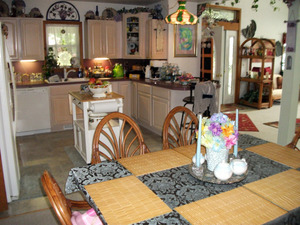There are 300 species of bamboo plants that should be placed in locations where they can receive at least 5 hours of direct sunlight daily when planting them. Bamboo needs plenty of water, fertilizer, and weed protection to best prosper. Adding a light shade or a windscreen when first planting bamboo aids in their growth as well.
Fargesia bamboo (Umbrella Bamboo) can grow to heights of 10 to 14 feet but are not recommended for southeastern United States climates. Fargesias are beautiful, soft, cascading evergreen foilages that best grow in afternoon shade. This type of bamboo retains its green foilage in the Winter and ages to a yellowish-green color when mature. Fargesias are a good spreading bamboo plant.
Thamnoclamus bamboos are the hardiest of all bamboo plants and do not spread. These plants can grow to 16 feet tall although 12 to 15 feet is the average height of this type of bamboo. Thamnoclamus bamboos are South African, mountain bamboos that grow well in the Pacific Northwest. These bamboos have very thick clums, are wind tolerant, and grow well in coastal surroundings.
Other types of bamboo plants include Timber Bamboo that can grow 30 to 70 feet tall. Mid-size Bamboo has a height of 15 to 30 feet. Cold-Hearty Clumping and Cold-Sensitive bamboos can measure 6 to 50 feet tall. Small Running Bamboos can range from 1 to 8 feet tall. Most bamboo plants can be planted nearly back to back without suffering.
A moderately acidic, loamy soil should be selected when planting bamboo. Heavy mulching of a couple inches spread around bamboo plants, especially over the roots and rhizomes, should be used, however, do not rake up the bamboo leaves, they should be left under the plants for soft, moist soil. Grass and recycled silica are suggested mulches for bamboo plants, as are almost any Organic materials, hay, or compost.
Annual root pruning, and a barrier of 60 millimeters long by 30 inches deep running completely around the bamboo plants helps control the spread of bamboo. HDPE (high density polyethylene) controls the rhizomes of bamboo plants. When filling the holes around planted bamboo pack them tightly. Soil amendments should be used only in the top couple feet around the bamboo plants.
Frequent, liberal, twice-weekly watering of bamboo is necessary for newly planted plants, at a rate of at least 1/2 gallon of water for plants under 5 gallon size. A high nitrogen fertilizer should be used for healthier, more attractive bamboo plants. 21-5-6 fertilizer is recommended. Organic fertilizer works well with bamboo if they are high nitrogen fertilizers provided in 2 to 3-inch layers around the plants.
Bamboo should be pruned annually to maintain the plants attractiveness. Bamboo culms live about 15 years so older culms should be cut off. Pruning bamboo will not damage the plants. Cut above the nodes of the plants when pruning.
Bamboo plants should be watered with filtered water or rain water for best results. Soiled fish tank water supplies healthier nutrients to bamboo. Water should be as free of chemicals as possible when used to water bamboo. Water levels should remain high in the plant containers and they should never be less than half full. The roots of bamboo plants should be completely covered by water
Bamboo plants can be fed acquarium plant food monthly to help fertilize them. Only a few drops are needed and bamboo plants prefer shadier areas. Liquid houseplant food can be used at one-tenth of its original strength and two to three drops added directly to the water in the plant container.
Filling the bamboo container with rocks or pebbles, cleaned well between plantings, keeps them standing upright. Wipe bamboo plants with damp cloths for dust and insect removal to help keep them healthier. Handle bamboo roots carefully when planting them. Do not tear or break new roots as this can damage the plants growing abilities.
Do not allow potted bamboo plants to dry out. Plant bamboo immediately in a hole twice the diameter of the plant pot, and one that is dug at least 50% deeper. The hole should be at least 2 feet deep. Remove sandy soil if possible. Doughnut-shaping the earth mounds around planted bamboo a few inches tall helps retain water for the newly planted plants. Firmly pack the soil around bamboo filling the holes to ground level.
These suggestions for the care of bamboo plants can be located at the following websites: bamboogardens.com, garden.lovetoknow.com, americanbamboo.org, tropicalbamboo,com, and outdoorlandscapingideas.com.

